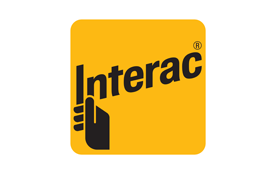card odds in poker
Poker is a game of skill, strategy, and a good understanding of probability. One of the most crucial aspects of poker strategy is understanding card odds. Card odds help players make informed decisions about whether to call, raise, or fold based on the likelihood of improving their hand. This article will delve into the concept of card odds in poker, how to calculate them, and how to use them effectively in your gameplay. What Are Card Odds? Card odds, also known as pot odds, refer to the ratio of the current size of the pot to the cost of a contemplated call.
- Lucky Ace PalaceShow more
- Cash King PalaceShow more
- Starlight Betting LoungeShow more
- Golden Spin CasinoShow more
- Silver Fox SlotsShow more
- Spin Palace CasinoShow more
- Royal Fortune GamingShow more
- Diamond Crown CasinoShow more
- Lucky Ace CasinoShow more
- Royal Flush LoungeShow more
Source
- card odds in poker
- card odds in poker
- 2 card poker online free
- 2 card poker online free
- card odds in poker
- 2 card poker online free
card odds in poker
Poker is a game of skill, strategy, and a good understanding of probability. One of the most crucial aspects of poker strategy is understanding card odds. Card odds help players make informed decisions about whether to call, raise, or fold based on the likelihood of improving their hand. This article will delve into the concept of card odds in poker, how to calculate them, and how to use them effectively in your gameplay.
What Are Card Odds?
Card odds, also known as pot odds, refer to the ratio of the current size of the pot to the cost of a contemplated call. Essentially, it helps you determine whether it’s profitable to continue playing a hand based on the potential reward compared to the risk.
Key Terms
- Pot Odds: The ratio of the current size of the pot to the cost of a contemplated call.
- Outs: The number of cards that can improve your hand.
- Implied Odds: The potential payout based on future betting rounds.
Calculating Card Odds
To calculate card odds, you need to follow a few simple steps:
Determine Your Outs: Count the number of cards that can improve your hand. For example, if you have a flush draw, there are 9 cards (13 total - 4 on the board - 4 in your hand) that can complete your flush.
Calculate the Probability: Use the number of outs to determine the probability of hitting your hand. A common rule of thumb is the “Rule of 2 and 4”:
- Rule of 2: Multiply your outs by 2 to get the approximate percentage of hitting your hand on the next card.
- Rule of 4: Multiply your outs by 4 to get the approximate percentage of hitting your hand by the river if you see both the turn and river cards.
Compare with Pot Odds: Once you have the probability, compare it to the pot odds. Pot odds are calculated by dividing the size of the pot by the amount you need to call.
Example Calculation
- Pot Size: $100
- Call Amount: $20
- Pot Odds: \(100 / \)20 = 5:1
If you have 9 outs, using the Rule of 2:
- Probability of Hitting on the Next Card: 9 * 2 = 18%
Convert the percentage to odds:
- Odds: (100 - 18) / 18 ≈ 4.6:1
In this case, the pot odds (5:1) are better than the card odds (4.6:1), making it a profitable call.
Using Card Odds in Decision-Making
Understanding card odds is essential for making strategic decisions in poker. Here are some tips on how to use card odds effectively:
- Fold When Card Odds Are Worse: If the pot odds are worse than the card odds, it’s usually not profitable to call.
- Consider Implied Odds: Sometimes, the pot odds alone don’t justify a call, but the potential future bets (implied odds) might.
- Adjust for Opponent’s Range: Consider the range of hands your opponent might have. If they are likely to have a strong hand, your card odds might be less favorable.
Card odds are a fundamental concept in poker that every player should master. By understanding and calculating card odds, you can make more informed decisions, improve your profitability, and enhance your overall poker strategy. Remember, poker is not just about luck; it’s about making the right decisions based on the probabilities and odds at play.

understanding face up pai gow odds: a comprehensive guide
Pai Gow Poker, a popular casino game that combines elements of poker and traditional Chinese Pai Gow, has gained significant traction in both land-based and online casinos. One of the variants of this game is Face Up Pai Gow, where players can see the dealer’s hand, adding an extra layer of strategy and excitement. Understanding the odds in Face Up Pai Gow is crucial for maximizing your chances of winning. This guide will delve into the intricacies of Pai Gow odds, providing you with the knowledge needed to excel in this captivating game.
The Basics of Pai Gow Poker
Before diving into the odds, it’s essential to understand the fundamentals of Pai Gow Poker:
- Objective: The goal is to create two poker hands from seven cards—a five-card hand (the “High Hand”) and a two-card hand (the “Low Hand”). Both hands must beat the dealer’s corresponding hands to win.
- Hand Rankings: The five-card hand must rank higher than the two-card hand. The five-card hand uses standard poker rankings, while the two-card hand is simply a pair or two individual cards.
- Dealer’s Hand: In Face Up Pai Gow, the dealer’s hand is revealed, allowing players to strategize accordingly.
Understanding the Odds
1. House Edge
- Standard Pai Gow: The house edge in standard Pai Gow Poker is around 2.5%.
- Face Up Pai Gow: The house edge can vary slightly but generally remains close to the standard version. Understanding this edge helps in managing your bankroll effectively.
2. Hand Probabilities
- Five-Card Hand: The probability of getting specific hands in the five-card hand can significantly impact your strategy. For instance, the odds of getting a Straight or better are approximately 1 in 25.
- Two-Card Hand: The odds of forming a pair in the two-card hand are relatively high, around 1 in 2. This makes it crucial to prioritize the five-card hand when setting your hands.
3. Dealer’s Hand Analysis
- Reading the Dealer: In Face Up Pai Gow, analyzing the dealer’s hand is key. If the dealer has a strong five-card hand, you may need to adjust your strategy to ensure your five-card hand is stronger.
- Opportunity for Push: If your hands match the dealer’s, the result is a push, and you neither win nor lose. Understanding when to aim for a push can be a strategic move.
Strategies to Improve Your Odds
1. Optimal Hand Setting
- Prioritize the Five-Card Hand: Always aim to set the strongest possible five-card hand. This increases your chances of beating the dealer’s corresponding hand.
- Balancing the Two-Card Hand: While the five-card hand is crucial, don’t neglect the two-card hand. Ensure it is strong enough to beat the dealer’s two-card hand without compromising the five-card hand.
2. Leveraging the Dealer’s Hand
- Adjusting Based on Dealer’s Strength: If the dealer’s five-card hand is weak, you can afford to be more aggressive with your hand setting. Conversely, if the dealer has a strong hand, you may need to play more conservatively.
- Exploiting Dealer’s Weaknesses: Look for patterns in the dealer’s hand distribution. If the dealer frequently sets hands in a predictable manner, you can exploit this to your advantage.
3. Bankroll Management
- Setting Limits: Establish clear win and loss limits to avoid excessive betting. This helps in maintaining a healthy bankroll over the long term.
- Bet Sizing: Adjust your bet size based on the perceived strength of your hand relative to the dealer’s. This dynamic approach can maximize your winnings while minimizing losses.
Understanding the odds in Face Up Pai Gow Poker is a blend of mathematical probabilities and strategic decision-making. By mastering the basics, analyzing the dealer’s hand, and employing effective strategies, you can significantly enhance your chances of winning. Whether you’re a seasoned player or a newcomer to the game, this comprehensive guide provides the tools needed to navigate the complexities of Face Up Pai Gow and emerge victorious.

let it ride poker: strategies, odds, and winning tips
Let It Ride Poker is a popular casino table game that combines elements of poker with strategic betting. The game is designed to offer players the thrill of poker while maintaining the simplicity of a casino game. Here, we delve into the strategies, odds, and winning tips that can help you master Let It Ride Poker.
Understanding the Game
Let It Ride Poker is played with a standard 52-card deck. The objective is to make the best possible five-card poker hand using three community cards and two hole cards dealt to the player. The game involves three betting circles, and players have the option to “let it ride” or withdraw their bets based on their initial two cards.
Basic Rules
- Initial Bet: Place three equal bets on the three circles.
- First Two Cards: Receive two hole cards face down.
- First Decision: Decide whether to let the first bet ride or withdraw it.
- First Community Card: The dealer reveals the first community card.
- Second Decision: Decide whether to let the second bet ride or withdraw it.
- Second Community Card: The dealer reveals the second community card.
- Final Hand: The dealer reveals the third community card, and the final five-card hand is evaluated.
Strategies for Let It Ride Poker
1. Know When to Let It Ride
- Strong Starting Hands: Let it ride if you have a strong starting hand, such as a pair of 10s or better, three cards to a royal flush, or three cards to a straight flush.
- First Community Card: If the first community card improves your hand significantly, consider letting it ride.
- Second Community Card: If the second community card enhances your hand, it might be wise to let the second bet ride.
2. Manage Your Bankroll
- Set Limits: Establish a betting limit and stick to it. Avoid chasing losses by increasing bets.
- Withdraw Wisely: If your initial hand is weak, withdraw the first bet to minimize losses.
3. Understand the Payouts
- Payout Table: Familiarize yourself with the payout table. Different casinos may have varying payout structures, so knowing the odds can help you make informed decisions.
Odds in Let It Ride Poker
1. Hand Probabilities
- Royal Flush: 1 in 649,740
- Straight Flush: 1 in 72,193
- Four of a Kind: 1 in 4,165
- Full House: 1 in 694
- Flush: 1 in 508
- Straight: 1 in 255
- Three of a Kind: 1 in 47
- Two Pair: 1 in 21
- Pair of 10s or Better: 1 in 3.3
2. House Edge
- House Edge: The house edge in Let It Ride Poker is around 3.51%. Understanding this can help you manage your expectations and bankroll effectively.
Winning Tips
1. Practice Patience
- Wait for Good Hands: Don’t rush into letting your bets ride. Wait for strong hands to maximize your chances of winning.
2. Use Strategy Charts
- Strategy Charts: Utilize strategy charts to make optimal decisions based on your initial two cards and the community cards.
3. Stay Updated
- Game Variations: Be aware of any variations in the game rules or payouts at different casinos.
4. Play Responsibly
- Responsible Gambling: Always gamble responsibly. Set time and money limits to ensure a fun and safe gaming experience.
By understanding the strategies, odds, and tips outlined above, you can enhance your gameplay and increase your chances of winning in Let It Ride Poker.

face up pai gow poker odds
Face Up Pai Gow Poker is a captivating variant of the traditional Pai Gow Poker, where players can see the dealer’s hand face up. This transparency adds an extra layer of strategy and excitement to the game. To excel in Face Up Pai Gow Poker, understanding the odds is crucial. Here’s a detailed breakdown of the odds involved in this game.
Basic Rules of Face Up Pai Gow Poker
Before diving into the odds, it’s essential to understand the basic rules:
- Objective: Create two poker hands from seven cards—a five-card hand (High Hand) and a two-card hand (Low Hand).
- Hand Rankings: The five-card hand must rank higher than the two-card hand.
- Dealer’s Hand: The dealer’s hand is dealt face up, allowing players to strategize accordingly.
Odds in Face Up Pai Gow Poker
1. Natural Hands
Natural hands are those that do not require any strategy decisions. The odds of getting specific natural hands are:
- Royal Flush: 1 in 649,740
- Straight Flush: 1 in 72,193
- Four of a Kind: 1 in 4,165
- Full House: 1 in 694
- Flush: 1 in 508
- Straight: 1 in 255
- Three of a Kind: 1 in 47
- Two Pair: 1 in 21
- One Pair: 1 in 2.37
2. Setting Hands
Setting hands involves making strategic decisions on how to split the seven cards into the High and Low hands. The odds of getting specific hands for setting are:
High Hand (Five-Card):
- Royal Flush: 1 in 649,740
- Straight Flush: 1 in 72,193
- Four of a Kind: 1 in 4,165
- Full House: 1 in 694
- Flush: 1 in 508
- Straight: 1 in 255
- Three of a Kind: 1 in 47
- Two Pair: 1 in 21
- One Pair: 1 in 2.37
Low Hand (Two-Card):
- Pair: 1 in 2.37
- High Card: 1 in 1.37
3. Winning Odds
The odds of winning in Face Up Pai Gow Poker depend on several factors, including the dealer’s hand and the player’s hand. Here are some general winning odds:
- Winning Both Hands: 28.6%
- Winning One Hand (Push): 41.4%
- Losing Both Hands: 29.9%
4. Dealer’s Hand Influence
Since the dealer’s hand is face up, players can adjust their strategy based on the dealer’s hand. The odds of the dealer getting specific hands are:
- Royal Flush: 1 in 649,740
- Straight Flush: 1 in 72,193
- Four of a Kind: 1 in 4,165
- Full House: 1 in 694
- Flush: 1 in 508
- Straight: 1 in 255
- Three of a Kind: 1 in 47
- Two Pair: 1 in 21
- One Pair: 1 in 2.37
Strategies Based on Odds
1. Setting the High Hand
- Royal Flush or Straight Flush: Always keep these as the High Hand.
- Four of a Kind: Consider splitting if the remaining three cards can form a strong two-card hand.
- Full House: Generally keep as the High Hand, but split if the two-card hand can be stronger.
- Flush or Straight: Keep as the High Hand unless the two-card hand can be significantly stronger.
2. Setting the Low Hand
- Pair: Always keep as the Low Hand.
- High Cards: Aim to form the strongest possible two-card hand.
3. Adjusting for the Dealer’s Hand
- Strong Dealer’s Hand: Play more conservatively, focusing on not losing both hands.
- Weak Dealer’s Hand: Play more aggressively, aiming to win both hands.
Understanding the odds in Face Up Pai Gow Poker is essential for making informed decisions and increasing your chances of winning. By analyzing the dealer’s hand and strategically setting your hands, you can optimize your gameplay and enjoy this thrilling variant of Pai Gow Poker.

Frequently Questions
How do the bonus odds in 3 card poker compare to other poker variants?
In 3 Card Poker, bonus odds are typically higher compared to other poker variants due to the game's structure. Players receive bonuses for strong hands like straights and flushes, which are more common in 3 Card Poker due to the reduced number of cards. This makes the bonus payouts more frequent and potentially more lucrative. For instance, a straight flush in 3 Card Poker often pays 40:1, while in Texas Hold'em, such odds are rarer and usually offer lower payouts. This higher frequency of bonus opportunities in 3 Card Poker makes it a more attractive option for players seeking frequent, albeit smaller, rewards.
What Are the Odds in 6 Card Video Poker Online?
In 6-card video poker online, the odds vary based on the specific game variant and the player's strategy. Typically, the odds are calculated by considering the probability of drawing specific hands from a 52-card deck. For instance, the odds of getting a Royal Flush are approximately 1 in 178,365, while a Straight Flush is around 1 in 9,148. Understanding these odds helps players make informed decisions to maximize their chances of winning. It's crucial to choose a reputable online casino and use optimal strategy to enhance your odds in 6-card video poker.
How do the odds differ in 2 card poker compared to other poker variants?
In 2-card poker, the odds differ significantly due to the reduced number of cards. Players receive only two cards, making straights and flushes impossible. The focus shifts to pairs and high cards, with pairs being the strongest hand. This simplifies the odds, as the probability of drawing a pair is higher than in games with more cards. For instance, the odds of getting a pair from a 52-card deck are approximately 1 in 17. In contrast, games like Texas Hold'em involve more complex hand combinations and require more strategic thinking due to the additional community cards. Thus, 2-card poker offers a quicker, simpler experience with different odds and strategies compared to other poker variants.
What are the odds in 7-card hold 'em poker?
In 7-card hold 'em poker, players are dealt seven cards from which they form the best possible five-card hand. The odds of getting specific hands vary significantly. For instance, the odds of being dealt a royal flush, the highest hand, are approximately 1 in 30,940. A straight flush, which is the second-best hand, has odds of about 1 in 4,165. The odds for a four-of-a-kind are roughly 1 in 595, while a full house is around 1 in 38. A flush, which is a hand with five cards of the same suit, has odds of about 1 in 40. Understanding these odds can help players make informed decisions and improve their strategy in 7-card hold 'em poker.
How do the odds differ in 2 card poker compared to other poker variants?
In 2-card poker, the odds differ significantly due to the reduced number of cards. Players receive only two cards, making straights and flushes impossible. The focus shifts to pairs and high cards, with pairs being the strongest hand. This simplifies the odds, as the probability of drawing a pair is higher than in games with more cards. For instance, the odds of getting a pair from a 52-card deck are approximately 1 in 17. In contrast, games like Texas Hold'em involve more complex hand combinations and require more strategic thinking due to the additional community cards. Thus, 2-card poker offers a quicker, simpler experience with different odds and strategies compared to other poker variants.




















